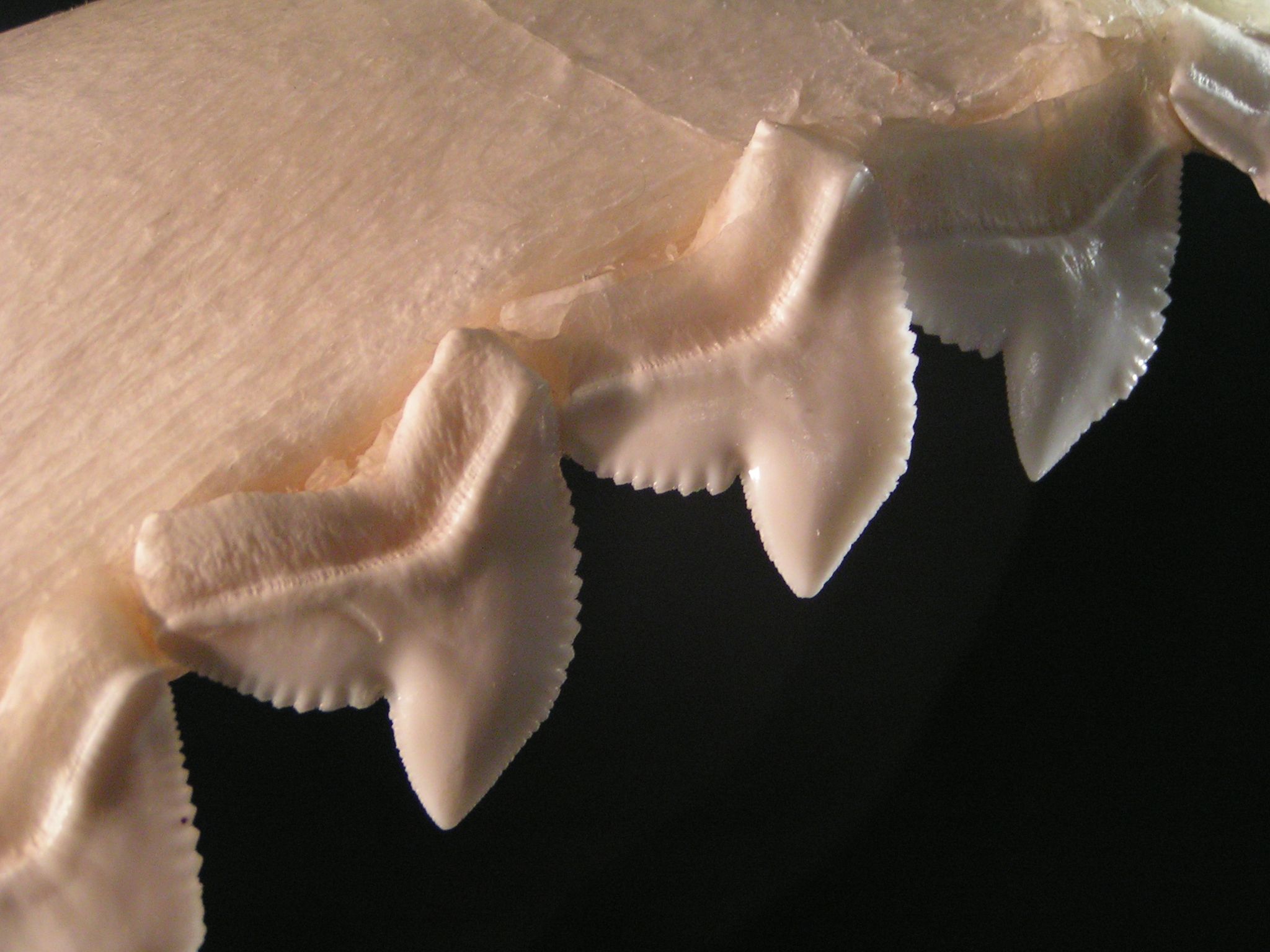Nutrition
The tiger shark has gotten the
nickname “wastebasket of the sea” for a very good reason. It is because they will eat almost anything, ranging from
octopi, to
blue
 whales, to
even pieces of trash (Witzell, 1987).
Amazingly, pieces of wood and metal have even been found in the
stomachs of these sharks (Witzell, 1987)! But, one of the most
common food items to be found in the stomach of tiger sharks are
pieces of
large
sea turtles
(Witzell, 1987). These creatures have a large effect on the
shark as they have moved in to and adopted the same habitats as
turtles (Witzell, 1987). Along with adopting the same habitat,
the tiger shark also has evolved the perfect body to ingest
these organisms.
whales, to
even pieces of trash (Witzell, 1987).
Amazingly, pieces of wood and metal have even been found in the
stomachs of these sharks (Witzell, 1987)! But, one of the most
common food items to be found in the stomach of tiger sharks are
pieces of
large
sea turtles
(Witzell, 1987). These creatures have a large effect on the
shark as they have moved in to and adopted the same habitats as
turtles (Witzell, 1987). Along with adopting the same habitat,
the tiger shark also has evolved the perfect body to ingest
these organisms.
Although the tiger shark has a slow and sluggish behavior, they have the
capability to have bursts of speed once ready to attack prey
(Witzell, 1987). When trying to detect their prey, they will use
special vibration detectors on the sides of their bodies, and just
like other sharks such as the
hammerhead, they will use their pectoral, caudal and dorsal
fins for movement (Edmunds,
2008). What really
sets these sharks apart from others can be found within their
mouths. First, the mouth of a tiger shark is wider when compared to
other sharks (Edmunds, 2008). Second, they have highly evolved
teeth. On each tooth primary cusp (the part of the tooth that comes
to a point), there are tiny serrations
designed to cut in their prey similar to how a saw would (Edmunds,
2008). Just think about that for a second; instead of blade like
teeth that will make smooth, straight slits in the flesh, the saw
like teeth will creath more damage to flesh by ripping it instead of
slicing it.
What makes them so lethal is that both the upper and lower jaws of
this shark are lined with these types of teeth, giving them the
ability to rip almost anything to shreds (Edmunds,
2008). Each tooth also has a very strong cap on each point,
making the
tooth strong enough to take on tough surfaces without breaking
(Witzell, 1987). This is how the tiger shark is able to take on the
shell of large sea turtles with ease. Along with the specialized
teeth, a tiger shark’s jaw undergoes a rolling motion which further
assists in the ability to cut through tough materials (Witzell,
1987).
primary cusp (the part of the tooth that comes
to a point), there are tiny serrations
designed to cut in their prey similar to how a saw would (Edmunds,
2008). Just think about that for a second; instead of blade like
teeth that will make smooth, straight slits in the flesh, the saw
like teeth will creath more damage to flesh by ripping it instead of
slicing it.
What makes them so lethal is that both the upper and lower jaws of
this shark are lined with these types of teeth, giving them the
ability to rip almost anything to shreds (Edmunds,
2008). Each tooth also has a very strong cap on each point,
making the
tooth strong enough to take on tough surfaces without breaking
(Witzell, 1987). This is how the tiger shark is able to take on the
shell of large sea turtles with ease. Along with the specialized
teeth, a tiger shark’s jaw undergoes a rolling motion which further
assists in the ability to cut through tough materials (Witzell,
1987).